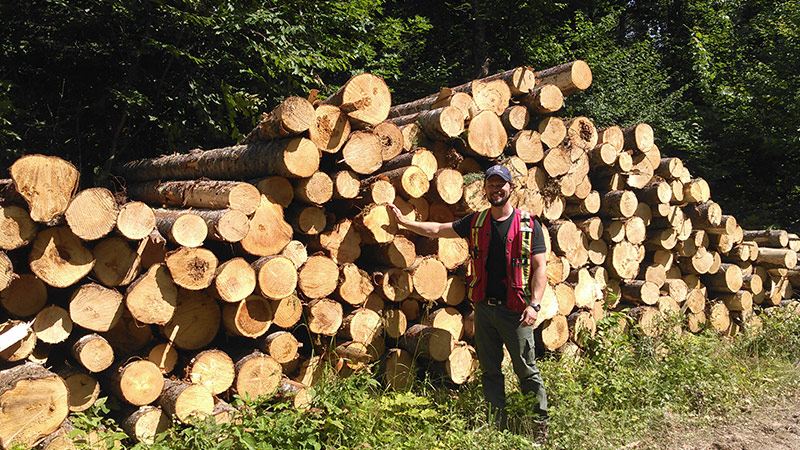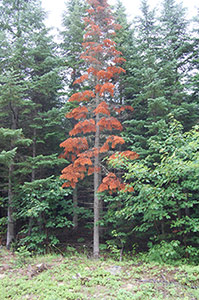Research warns of climate threat to balsam fir as holiday season approaches
Author: UNB Newsroom
Posted on Nov 20, 2024
Category: Press Releases

As the holiday season approaches and families across New Brunswick prepare to decorate their homes with festive balsam fir trees, new research is sounding the alarm about the threat of climate change to the province’s beloved evergreen.
A study led by researchers Anthony Taylor and James Broom at the University of New Brunswick (UNB) and Loïc D’Orangeville at Université Laval (UL) has revealed that balsam fir trees are facing increasing mortality risks due to climate anomalies including drought and rising summer temperatures.
Published in Frontiers in Forests and Global Change, the study underscores the urgent need for climate change action and adaptive forest management to protect this iconic tree species, which holds cultural and economic significance in New Brunswick.
“With last year being the warmest year on record and 2024 expected to surpass this, it’s increasingly imperative governments take strong action on slowing climate change now to avoid future catastrophic changes to our natural environment,” said Dr. Taylor. “While events like the 2018 balsam fir die-off highlighted in our study have been historically rare, they are highly likely to become more common under a warming climate”

The research team used advanced machine learning models to examine the causes behind sudden balsam fir mortality, focusing on dieback events in 2018 and 1986. The study found that unusually dry summers, coupled with high temperatures and deep snowpacks in the spring, created a perfect storm of conditions that led to water stress and, ultimately, tree death.
These stressors weakened balsam fir trees, making them more vulnerable to pests, diseases and other environmental factors. According to the researchers, the trees' high respiration rates and limited tolerance for drought make them especially susceptible to these climate extremes.
“As the New Brunswick climate changes, it is predicted that balsam fir will become increasingly less viable as a commercial timber species,” said Broom. “This research has demonstrated some vulnerabilities of balsam fir that are likely to become more of a concern in a changing climate. It is important that scientists investigate unusual forest dieback and the University of New Brunswick is at the forefront of this type of research.”
Balsam fir, known for its fragrant needles and sturdy branches, is not only a symbol of New Brunswick's natural beauty but also a cornerstone of the province’s forestry industry. Each year, thousands of balsam firs are harvested to serve as holiday trees, making it a cultural icon during the festive season, but with climate change accelerating, the future of this iconic tree is uncertain.
As climate change makes extreme weather events more frequent and intense, projections suggest that droughts and temperature spikes will continue to threaten the survival of the balsam fir. The study calls for a shift in forest management practices, including diversifying tree species and improving monitoring of climate anomalies, to help protect balsam firs and ensure the resilience of the province’s forests.
Media contact
Kathleen McLaughlin
Media Relations Strategist
University of New Brunswick
talktous@unb.ca
